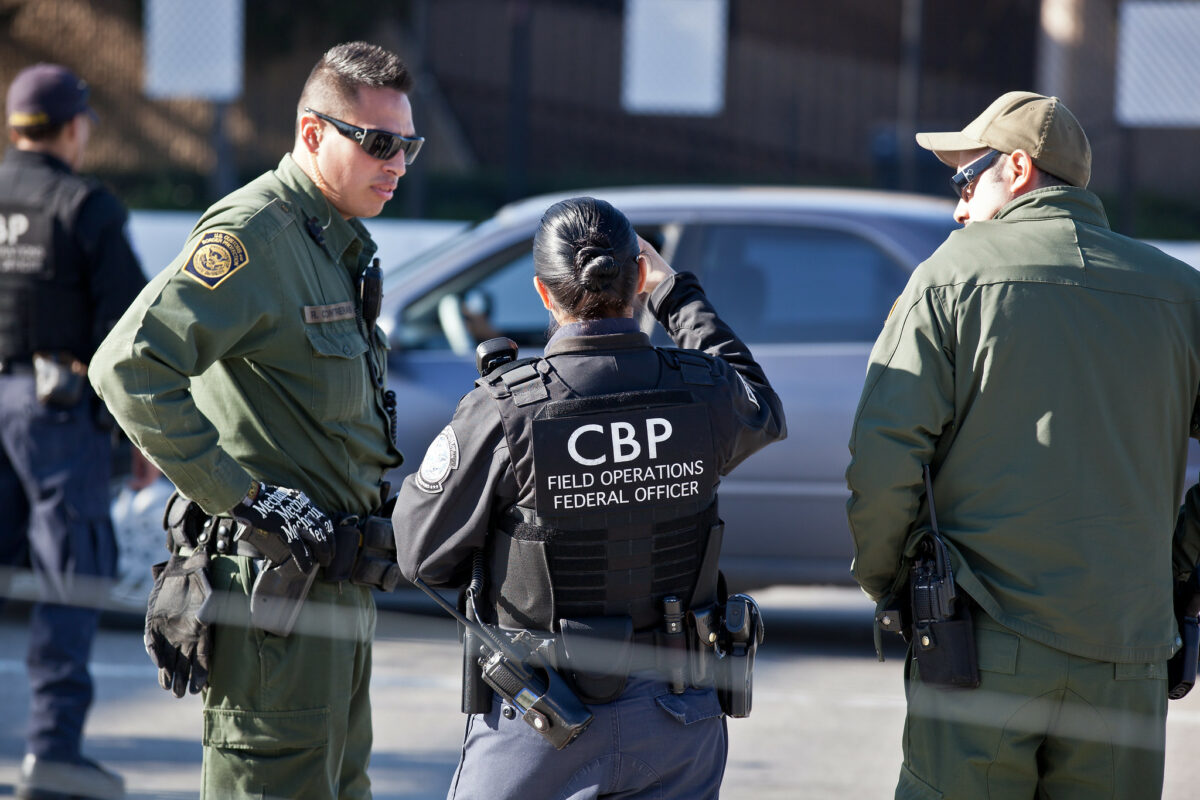According to a new report issued by the Department of Homeland Security’s Inspector General, U.S. border authorities wrongfully conducted surveillance against journalists and activists crossing between the United States and Mexico. The analysis stopped short of commenting on whether officials broke the law in doing so.
The Department of Homeland Security’s report addressed a practice first brought to light in a in a March 2019 report aired on KNSD-TV in San Diego, California.
The station obtained documents from a whistleblower within the agency showing how Customs and Border Protection (CBP) operatives targeted people they suspected could give them information on a migrant caravan that had traveled to the border from across Central America in late 2018.
According to KNSD:
The intelligence-gathering efforts were done under the umbrella of “Operation Secure Line,” the operation designated to monitor the migrant caravan, according to the source.
The documents list people who officials think should be targeted for screening at the border.
The individuals listed include ten journalists, seven of whom are U.S. citizens, a U.S. attorney, and 48 people from the U.S. and other countries, labeled as organizers, instigators or their roles “unknown.” The target list includes advocates from organizations like Border Angels and Pueblo Sin Fronteras.
That targeting took the form of “lookouts” — digital alerts that prompted agents to pull people on the list into secondary inspection and question them for information on the caravans. In the report, the Department of Homeland Security’s Office of Inspector General claims that there were legitimate reasons for flagging journalists, activists, and attorneys “suspected of organizing or being associated” with the caravan as well as purported organizers of the caravan itself.
“However,” the DHS report adds, “many CBP officials were unaware of CBP’s policy related to placing lookouts… Therefore, CBP may have inadvertently placed lookouts on U.S. citizens suspected of organizing or being associated with the migrant caravan, which did not fully comply with policy. Additionally, CBP officials did not remove lookouts promptly. As a result, CBP subjected some individuals to repeated and unnecessary secondary inspections.”
Among the journalists who were ensnared around the period of time covered in the report was TruthOrFiction.com editor-in-chief Brooke Binkowski, who estimated that she was stopped at the border four times in a six-month period. As the U.S. Press Freedom Tracker reported in November 2018:
“They kept me: no threats, no yelling. But that was almost worse because if felt like they were just keeping me because they could,” Binkowski said.
CBP officers held her for about an hour, Binkowski said, questioning her about where she had been in Tijuana and about her work as a journalist before letting her cross into the U.S. It was their “mindless exercise of power,” she told the Tracker, that pushed her to stop crossing the border. She hasn’t been back since this trip.
“In the end I stopped crossing not because of myself, though now I think it was prudent,” Binkowski said, “But because I was worried about potentially getting other people’s names on a list, and that kind of responsibility in this time is just too much.”
We contacted CBP asking if Binkowski was one of the journalists who was flagged for a “lookout.” The agency has yet to respond.
While Homeland Security investigators claim in the report that DHS was concerned that journalists were unnecessarily flagged as part of the policy, that agency adds that there was “no evidence in emails or interviews” that it was done to harass them.
According to the report, the journalists were flagged by “EOC Official 1” — a staff member at a Emergency Operations Center in San Diego. The DHS website states that these facilities are staffed by “state and/or local partners with minimal federal participation.”
“EOC Official 1” official reportedly told investigators that he placed the “lookouts” on the journalists to determine whether they had any information regarding an incident in which “members of the media” were allegedly spotted helping immigrants enter the U.S. through a fence.
But even if he did not do so to harass the journalists, the agency claims, the actions of “EOC Official 1” demonstrated that he had no interest in the information the “lookout” flags might have brought:
Over the following weeks, all five journalists came back to the United States, and CBP referred them to secondary inspection. Interview records reflect that none of the five journalists were asked about the illegal crossing. In fact, the journalists returned to the United States at various places and times and were therefore interviewed by several different officers. None of the officers asked about the illegal crossing.
Yet, EOC Official 1 apparently never followed up with any of the interviewing officers individually, or with [terrorism response officers] as a whole, to ask why they did not seek that information or to request that they do so in the future.
The report also claims that CBP inspections were “generally consistent” with the agency’s legal claim that the people targeted by the policy could provide more information on possible “illegal entry” into the United States. But two of the report’s footnotes point to the limits of that determination; one notes that investigators did not conduct “a legal analysis of the constitutional issues” raised by CBP’s practices. Another states:
In examining whether CBP documented legitimate reasons for placing the lookouts, we did not judge the soundness of this premise and did not otherwise evaluate the strength of the evidence supporting CBP’s lookouts. Even though in the following paragraphs we note some lookouts that appear in hindsight to be based on particularly attenuated connections to suspected illegal activity, we acknowledge the information may have appeared differently to CBP officials making real-time decisions.
Journalist Tom Jones, who was part of the KNSD reporting team that broke the original story, told us, “The public will likely see those constitutional issues debated in courtrooms across the country, as there are several lawsuits moving forward in response to these Operation Secure Line tactics.”
